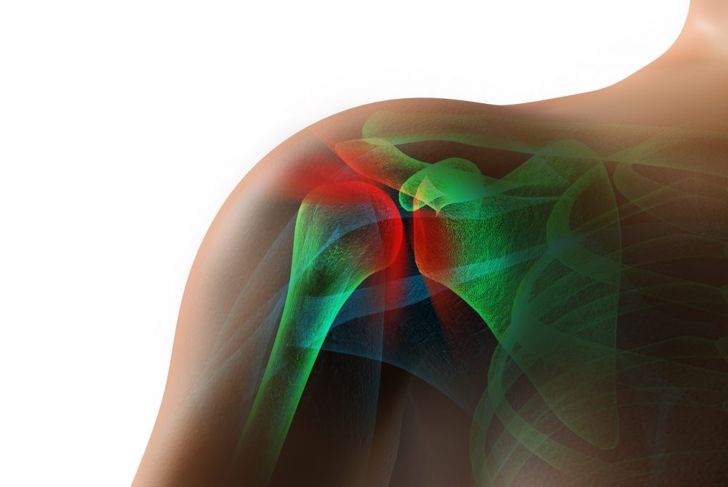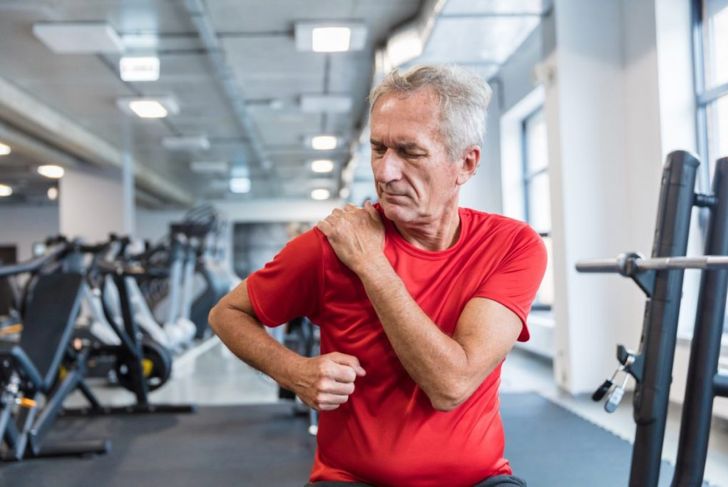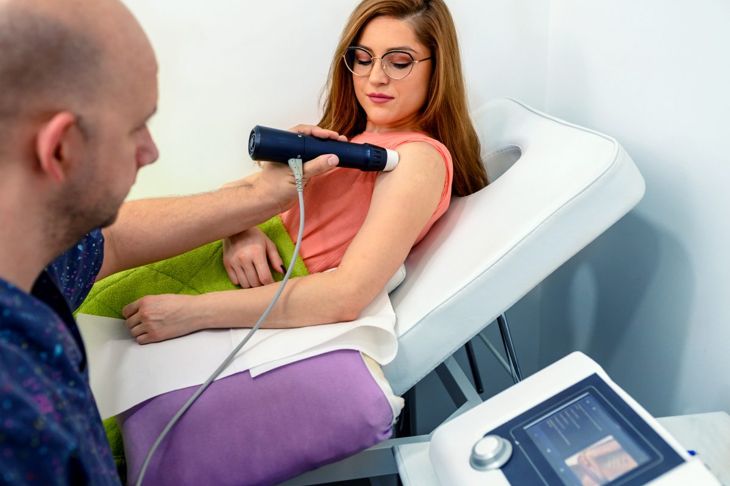The shoulder consists of many structures and moves more than most joints; as such, it is vulnerable to an array of issues. Young, athletic people and older individuals are particularly prone to shoulder injuries, one of the most common of which is shoulder impingement (shoulder impingement syndrome or swimmer’s shoulder). The condition can be extremely painful, depending on its severity. Experts classify shoulder impingement at several stages based on its progression and damage.
Shoulder Anatomy
Three bones make up the shoulder: the humerus, scapula, and clavicle, generally recognized as the upper arm bone, shoulder blade, and collarbone, respectively. The rotator cuff consists of several muscles and tendons that cover the head of the humerus and connect it to the scapula, holding the arm in the shoulder socket. At the top of the shoulder is the acromion. Between this bone and the rotator cuff, the bursa, a lubricating sac, allows the rotator cuff tendons to move around more freely. Each of these structures plays a role in shoulder impingement.
Outside Causes
Because of the complexity of this joint, shoulder impingement can refer to a range of symptoms involving any of these structures. Generally, shoulder impingement results from overuse. As a person uses their shoulder more, there is an increasing chance that tendons, bursae, or other soft tissues will become compressed between the bones of the shoulder. This is often due to repetitive overhead movement. Because athletes like swimmers and tennis players regularly use lots of force, along with constant shoulder movements, they are prone to shoulder impingement.
Mechanism
When a person raises their arm, the subacromial space narrows. This space is the area between the acromion and the humerus. As the subacromial space narrows, it may impinge on a tendon, causing an inflammatory response. This causes shoulder impingement syndrome. Mechanisms that shrink the subacromial space include bone projections, thickening of the bones, rotator cuff injuries, and inflammation of the bursa.
Symptoms
For most people, the main symptom of shoulder impingement is pain, particularly when lifting the arm overhead or reaching backward. The sensation may originate from the shoulder, top of the arm, or down the outside of the arm. Some people find that the pain worsens at night because they lie on the affected shoulder. Stiffness is also extremely common. Some impingements cause a clicking noise with certain movements. Athletes with shoulder impingement may have difficulty warming up and may feel pain in various locations, depending on their sport. As the impingement worsens, the person can experience weakness in the arm on the affected side.
Stages
Experts recognize three stages or grades of shoulder impingement. Each stage predominantly affects a specific age group and has a unique range of symptoms.
- Stage 1 mostly affects people under 25. Its main cause is overuse and repetitive movements of the shoulder.
- Stage 2 tends to affect individuals between 25 and 40. It consists of weakening tendons in the shoulder, known as tendinopathy and can lead to permanent scarring of the tendons.
- Stage 3 usually affects people over 40. It often includes a rotator cuff tear, tendon rupture, or changes to the bones.
Rotator Cuff Tear
One of the main coexisting conditions of shoulder impingement is a rotator cuff tear. Both result from similar causes and often directly affect each other. Usually, continual damage and stress to the bursa and rotator cuff tendons cause those tendons to tear. Shoulder impingement is one way that these tendons can receive consistent damage. Most people with rotator cuff tears experience only mild symptoms, but this does not mean the tear is harmless. Often, rotator cuff tears cause a significant increase in weakness and loss of motion, though many individuals fail to notice these effects right away. People with a torn rotator cuff may also experience pain when they raise their arm overhead and with certain movements.
Populations at Risk
Over time, regularly performing any activity that requires moving the shoulder up and backward leads to overuse and shoulder impingement. While young, athletic people are most at risk of shoulder impingement because of overuse, advanced age is also a factor. Because a person who lives longer has inevitably used their shoulder more, the damage builds over the years and can result in impingement in populations that experience excessive use. Activities that contribute to shoulder damage include:
- Swimming
- Tennis
- Baseball
- Softball
- Lifting
- Construction
- Painting
- Packing
Diagnosis
Doctors have a few methods of diagnosing shoulder impingement. Typically, they begin by performing a physical exam and looking for any signs of injury. This involves moving the arm in the socket or asking the patient to perform specific motions. To more accurately diagnose shoulder impingement, the physician may use x-rays or ultrasound scans. The latter is the most effective, though x-rays may find evidence of bone spurs or other growths contributing to the condition. MRI scans may show rotator cuff tears, but will not usually show impingement.
Treatment
Most cases of shoulder impingement do not require surgical treatment. Rest, steroids, and nonsteroidal anti-inflammatory medications are the most effective. Physicians usually pair these prescriptions with physical therapy to ensure the patient recovers their full range of motion and strength. In the rare case where surgery is necessary, surgeons will use minor incisions to remove bits of bone and muscle, alleviating some pressure in the shoulder.
Recovery Time
Ultimately, recovery from shoulder impingement depends on the severity of the impingement and any coexisting conditions. Most people recover within three to six months, though more severe cases may take up to a year. With physical therapy, many individuals return to normal activities within a few weeks. It is extremely common for those in recovery to become overconfident about how much they have healed. Because of this, they use their shoulder too much too soon and cause more serious damage.

 Home
Home Health
Health Diet & Nutrition
Diet & Nutrition Living Well
Living Well More
More




















